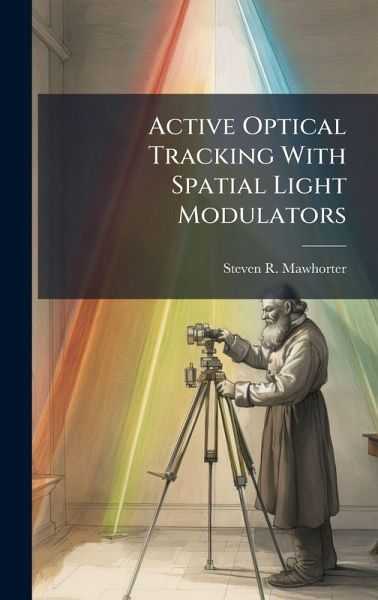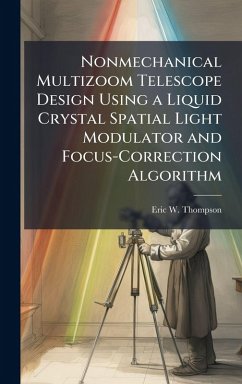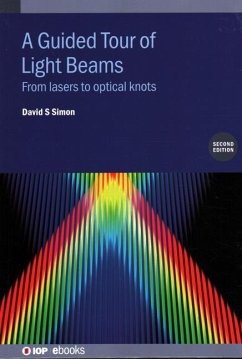
Active Optical Tracking With Spatial Light Modulators
Versandkostenfrei!
Versandfertig in über 4 Wochen
28,99 €
inkl. MwSt.
Weitere Ausgaben:

PAYBACK Punkte
14 °P sammeln!
Two spatial light modulators (SLMs) are utilized for beam splitting, steering and tracking. Both linear and holographic phase screens are used in a demonstration of technology to allow real time tracking to communicate in a one-to-several type scenario. One SLM is used to apply a linear phase modulation to steer multiple beams onto a detector. The spots that are produced represent the targets as they move around the field of view of the central communication node. A Gerchberg-Saxton algorithm will subsequently use the detected spots as the desired pointing locations. Using this as input, the G...
Two spatial light modulators (SLMs) are utilized for beam splitting, steering and tracking. Both linear and holographic phase screens are used in a demonstration of technology to allow real time tracking to communicate in a one-to-several type scenario. One SLM is used to apply a linear phase modulation to steer multiple beams onto a detector. The spots that are produced represent the targets as they move around the field of view of the central communication node. A Gerchberg-Saxton algorithm will subsequently use the detected spots as the desired pointing locations. Using this as input, the Gerchberg-Saxton algorithm yields a phase only map for multiple spot beam steering which is called the holographic phase. The holographic phase screens are then used on a second SLM to steer beams onto the same detector in near real time. As the target spots move about the detector's field of view, the holographic spots track them. This work has been selected by scholars as being culturally important, and is part of the knowledge base of civilization as we know it. This work was reproduced from the original artifact, and remains as true to the original work as possible. Therefore, you will see the original copyright references, library stamps (as most of these works have been housed in our most important libraries around the world), and other notations in the work. This work is in the public domain in the United States of America, and possibly other nations. Within the United States, you may freely copy and distribute this work, as no entity (individual or corporate) has a copyright on the body of the work. As a reproduction of a historical artifact, this work may contain missing or blurred pages, poor pictures, errant marks, etc. Scholars believe, and we concur, that this work is important enough to be preserved, reproduced, and made generally available to the public. We appreciate your support of the preservation process, and thank you for being an important part of keeping this knowledge alive and relevant.












